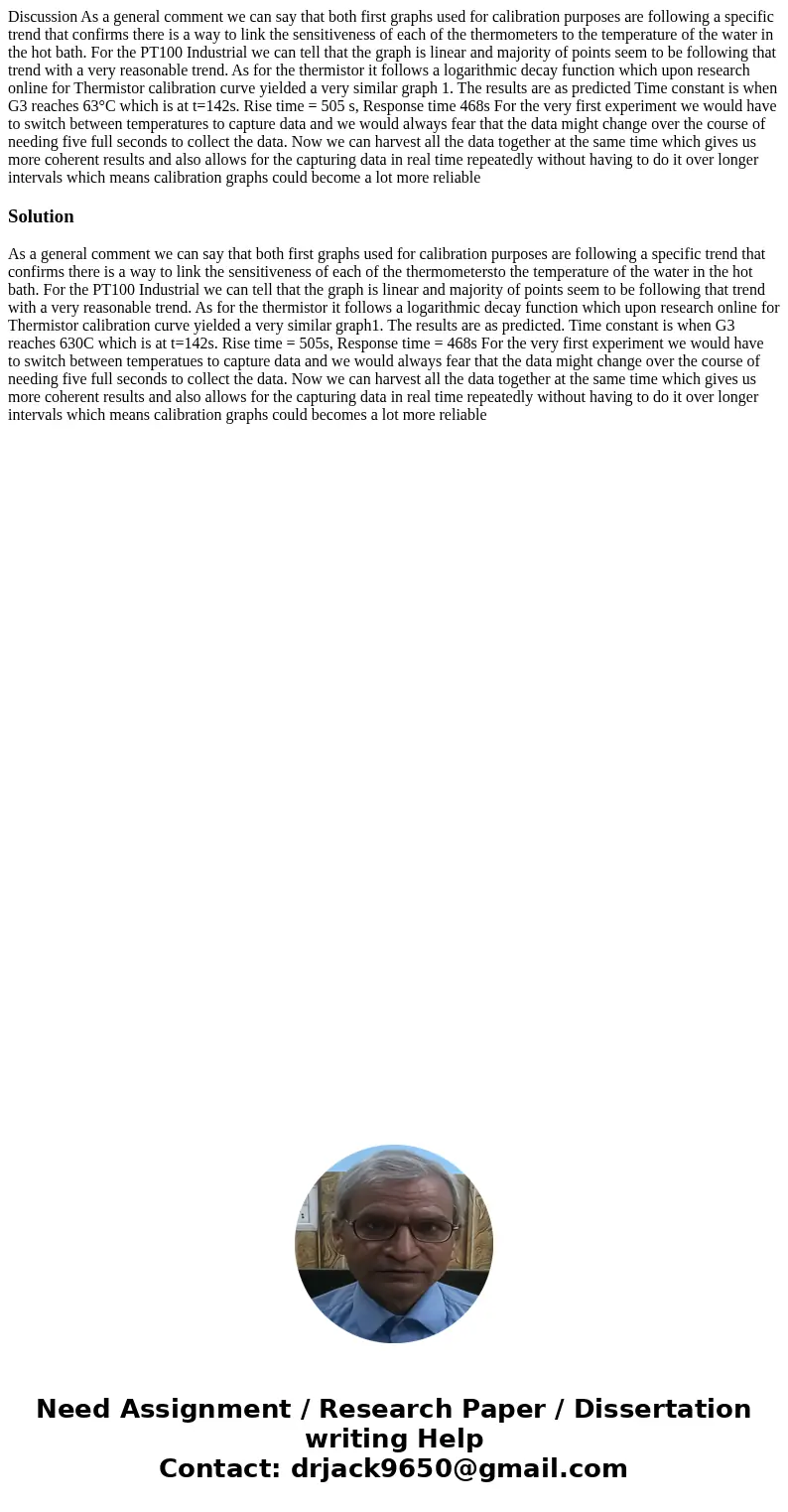Discussion As a general comment we can say that both first g
Discussion As a general comment we can say that both first graphs used for calibration purposes are following a specific trend that confirms there is a way to link the sensitiveness of each of the thermometers to the temperature of the water in the hot bath. For the PT100 Industrial we can tell that the graph is linear and majority of points seem to be following that trend with a very reasonable trend. As for the thermistor it follows a logarithmic decay function which upon research online for Thermistor calibration curve yielded a very similar graph 1. The results are as predicted Time constant is when G3 reaches 63°C which is at t=142s. Rise time = 505 s, Response time 468s For the very first experiment we would have to switch between temperatures to capture data and we would always fear that the data might change over the course of needing five full seconds to collect the data. Now we can harvest all the data together at the same time which gives us more coherent results and also allows for the capturing data in real time repeatedly without having to do it over longer intervals which means calibration graphs could become a lot more reliable 
Solution
As a general comment we can say that both first graphs used for calibration purposes are following a specific trend that confirms there is a way to link the sensitiveness of each of the thermometersto the temperature of the water in the hot bath. For the PT100 Industrial we can tell that the graph is linear and majority of points seem to be following that trend with a very reasonable trend. As for the thermistor it follows a logarithmic decay function which upon research online for Thermistor calibration curve yielded a very similar graph1. The results are as predicted. Time constant is when G3 reaches 630C which is at t=142s. Rise time = 505s, Response time = 468s For the very first experiment we would have to switch between temperatues to capture data and we would always fear that the data might change over the course of needing five full seconds to collect the data. Now we can harvest all the data together at the same time which gives us more coherent results and also allows for the capturing data in real time repeatedly without having to do it over longer intervals which means calibration graphs could becomes a lot more reliable
 Homework Sourse
Homework Sourse